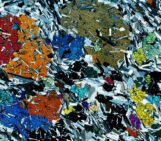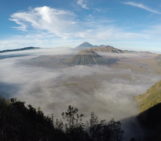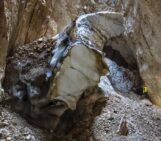Petrologists spend a large part of their time peering down microscopes at wafer thin slices of rock to work out what they’re made of and how they were formed. What lies on the other side of the lens can be an incredibly beautiful pattern, a kaleidoscope of colour, or stark bands of black and white, all of which provide clues to the rock’s history, and the history of the landscape it came from. Bernardo Cesare, enthusiastic photographer and professor of petrology at the University of Padova, Italy, has captured some fantastic images of these slender rock sections, including the incredible image of ocean jasper, below.
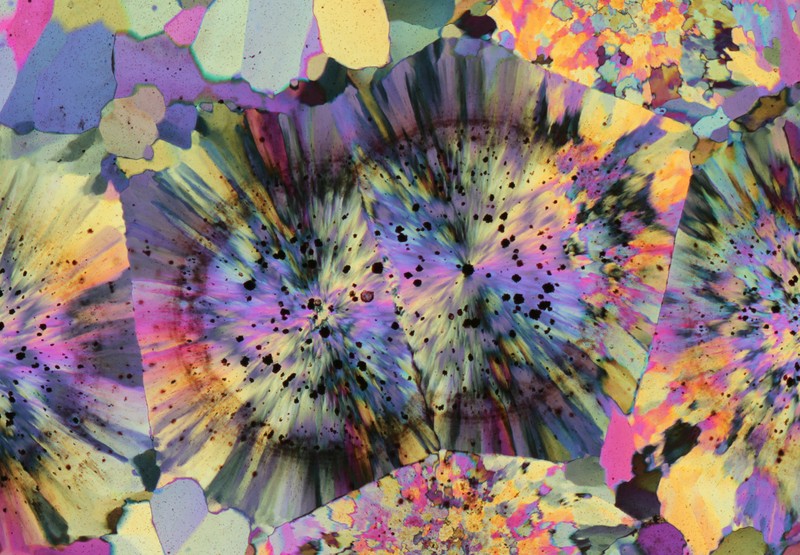
Ocean jasper under the microscope – 30 micrometres thin and almost entirely quartz. (Credit: Bernardo Cesare via imaggeo.egu.eu)
Ocean jasper is a variety of jasper found only in Madagascar and is increasingly sought after as a precious stone, and with that, decent rock samples are hard to come by. “I have long been searching for affordable samples of ocean jasper, until I saw a necklace in a market stall. I cut all the beads, prepared thin sections from them, and put them under the microscope,” says Cesare. “They turned out to contain a microscopic garden of quartz flowers in a fine-grained silica matrix. In places some coarser crystals form ‘rosettes’ in a lawn of fibrous quartz too.”
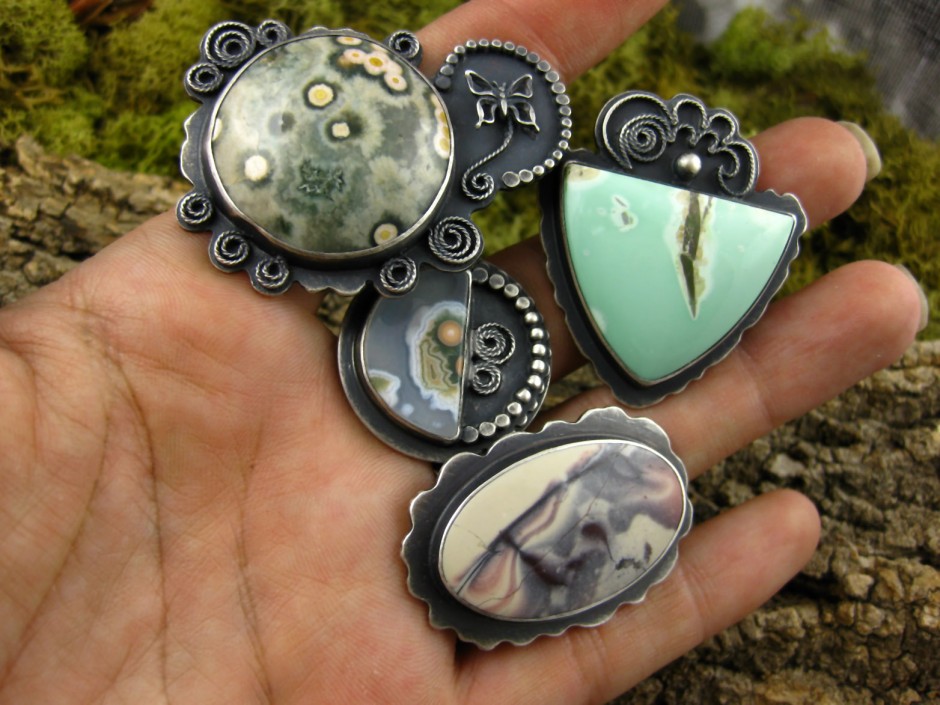
Jasper jewellery – it looks even more lovely under the microscope, don’t you think? (Credit: Tess Norberg/Nova Design)
Ocean jasper is made up of many minute orbs, just a few millimetres in diameter, known as spherulites. They form when silica-rich volcanic rocks change from being glassy to crystalline, and are saturated with silica in the process. This crystallisation occurs in arrays of thousands of fibrous, needle-like crystals. “They can grow as perfect spheres, but where they’re too close to one another the growing spherulites impinge on each other,” Cesare explains. This close clustering causes the spherulites to have sharp boundaries where they meet, something clearly seen in Cesare’s snap of the crystal structure.
Even though almost everything in the image (the exception being the small black dots, which are opaque minerals) is made of quartz, a rainbow of colours can be seen. These rainbows are known as interference colours, and they appear when polarized light passes through a crystal. So what creates this rainbow?
When white light, first polarized by a filter, passes through the crystals of a rock, it is split in two components that travel at different speeds. These components interfere with the crystal structure in different ways depending on their wavelength and the crystal’s orientation. When light emerges from the crystal and is filtered for the second time, some wavelengths are suppressed, so the colour of the light is no longer white. Cesare explains why: “the interference colour depends on the type of mineral (more precisely on its birefringence), on its thickness, and on its orientation. This is why crystals of the same mineral (quartz) may display different colours in my image: because they have different optical orientations!”
There are even ways to test out this tool at home: “even without a slice of rock, readers can test how interference colours emerge using two “crossed” polarizing filters (for example two orthogonal lenses of some sunglasses) and placing a stretched piece of plastic bag between them,” says Cesare.
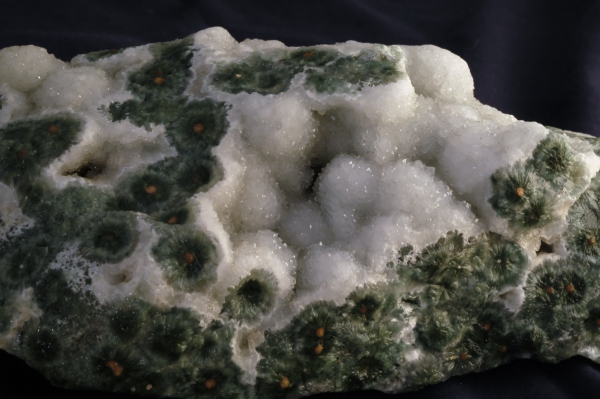
A shiny sample of ocean jasper (Credit: Druzy Macro)
“Polarized light is one of the fundamental tools of a geologist: with a polarizing microscope and a thin section we can recognize different minerals without the aid of more sophisticated and expensive analyses. Looking at colours and at their changes, at the shapes and contours of mineral grains, at their sizes and mutual relationships, not only can we understand which minerals a rock contains, but also in which sequence they formed, if some deformation occurred during or after their crystallisation, if they were transformed into other minerals and, qualitatively, at which pressure and temperature conditions the rock originated or evolved.” All these observations form the basis for more detailed research, such as, working out how many millions (or billions) of years ago the rock formed.
You can find out more about ocean jasper and Cesare’s photographic style over at National Geographic and on Geology In Art. You can also find more of his photography over at www.microckscopica.org.
By Sara Mynott, EGU Communications Officer
Imaggeo is the EGU’s open access geosciences image repository. Photos uploaded to Imaggeo can be used by scientists, the press and the public provided the original author is credited. Photographers also retain full rights of use, as Imaggeo images are licensed and distributed by the EGU under a Creative Commons licence. You can submit your photos here.

